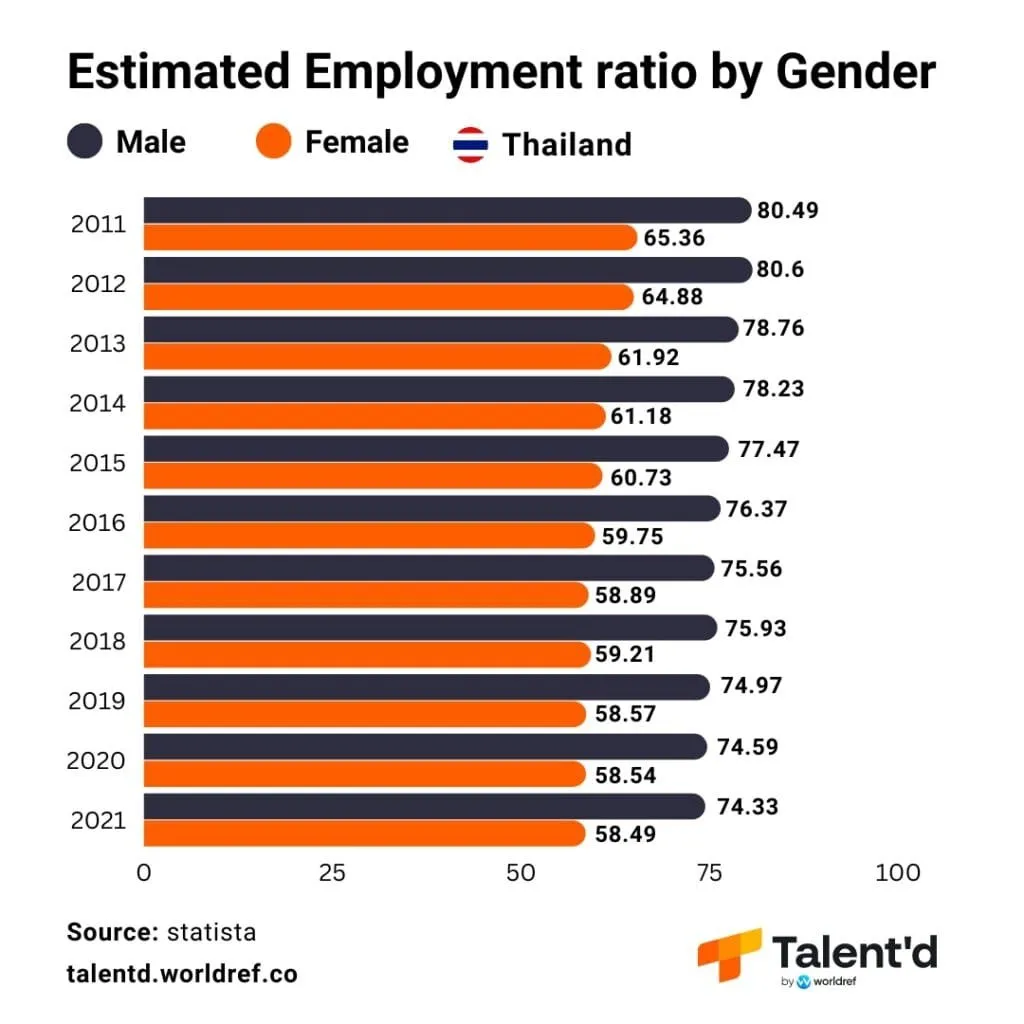Thailand’s construction sector is both dynamic and essential to the country’s economic development. Despite its robust growth trajectory, the sector faces notable workforce challenges. This article explores Thailand Construction Workforce Trends, including employment trends, skill gaps, and government efforts to build a more capable and inclusive construction workforce.
Employment in Thailand Construction Workforce Trends
As of June 2024, Thailand’s construction workforce consisted of 2.35 million workers, down from 2.47 million in March 2024. This fluctuation reflects the sector’s volatility, which is influenced by economic cycles, seasonal changes, and infrastructure demands. Over the years, workforce numbers have ranged from a high of 2.84 million in March 2013 to a low of 1.96 million in December 2017.
Read Also: Shortage in Skilled Labor in Thailand: Can Training Help?
The labor force participation rate, a critical indicator of workforce engagement, was 68.8% in February 2023. This suggests steady participation but also underscores the need for greater inclusion and stability within the sector.
Gender Disparity in the Workforce

Gender imbalance remains a significant challenge. In 2021, only 58.5% of females aged 15 and older were employed compared to 74.3% of males. This disparity highlights an untapped pool of potential workers. Addressing this gap through targeted policies and training could significantly boost the workforce’s size and diversity.
Industry Growth and Skill Gaps in Thailand Construction Workforce Trends
Thailand’s construction industry is on a promising growth path, projected to expand by 5.1% to reach THB 490 billion in 2024. With a CAGR of 4.5% expected through 2028, the demand for skilled labor is rising. However, this growth is tempered by a critical shortage of skilled workers, which hampers productivity and project quality.
The sector’s skill gap stems from outdated training methods, insufficient exposure to modern construction technologies, and limited opportunities for on-the-job learning. As projects become increasingly complex, bridging this gap is vital for better Thailand Construction Workforce Trends.
Government Initiatives to Upskill the Workforce
Recognizing the urgency of these challenges, the Thai government has introduced multiple initiatives to enhance workforce skills. Programs focus on modern construction techniques, sustainable practices, and safety standards. Notable efforts include vocational training programs and collaborations between educational institutions and industry stakeholders.
One significant policy is the Eastern Economic Corridor (EEC) project, which aims to boost infrastructure development while fostering workforce skill enhancement. By offering incentives for skill development, the government hopes to create a pipeline of talent equipped to meet the sector’s evolving needs.
Investment in Education and Training
Private and public investments in education and vocational training are reshaping the construction workforce landscape. Training centers across Thailand are equipping workers with advanced competencies, such as sustainable building practices and digital construction technologies. These initiatives not only fill immediate skill gaps but also position Thailand as a competitive player in the global construction market.
Read Also: The Hidden Growth of Urbanization and Construction Thailand
Thailand Construction Workforce Trends: The Path Forward
To sustain its growth, Thailand’s construction sector must embrace a multi-faceted approach to workforce development. This includes:
- Increased Gender Inclusion: Creating policies that encourage female participation can help bridge the employment gap and expand the labor pool.
- Modernized Training Programs: Introducing cutting-edge tools and technologies in vocational training can prepare workers for future industry demands.
- Public-Private Partnerships: Collaborating with private entities to design training programs ensures alignment with market needs.
Based on the Thailand Construction Workforce Trends mentioned above, we can say that Thailand’s construction industry is at a crossroads. Its projected growth is a beacon of opportunity, but the pressing challenges of workforce instability, skill shortages, and gender disparity demand immediate attention. Through sustained government support, industry collaboration, and targeted training initiatives, Thailand can build a skilled, inclusive, and resilient construction workforce.







